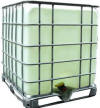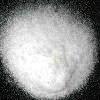| Mubychem Group, established in 1976, is the pioneer manufacturer of Calcium Acetate, Pharmaceutical, Fragrance & Flavor chemicals in India. Mubychem Group has several manufacturing facilities spread across Gujarat and Mumbai India and world wide contacts and toll manufacturers. We are exporting globally to countries like USA, Canada, Europe, UAE, South Africa, Tanzania, Kenya, Egypt, Nigeria, Uganda, Turkey, Mexico, Brazil, Chile, Argentina, Dubai etc. |
The participating units have one or more accreditations like FDA - GMP approval; ISO-9001 Certified; "REACH"registered; ISO-22000; Kosher Certified;Halal Certified; HACCP. We offer Pure & IP BP USP FCC Food Grade ACS AR Analytical Reagent Grades of Chemicals | |







Calcium Acetate SDS MSDS Sheet of Manufacturers
Specifications of Calcium Acetate MSDS Sheet
Calcium Acetate
Pure and
BP Ph Eur USP FCC Food Grades

Calcium Acetate SDS MSDS Sheet, Material Safety Data Sheet
Section 1: Chemical Product and Company Identification
Product Name: Calcium Acetate
Synonym: Calcium diacetate, Acetic acid, calcium salt.
CAS Number: 62-54-4 anhydrous & 5743-26-0 monohydrate
Molecular Weight: 158.17 anhydrous & 176.19 monohydrate
EINECS EC Number: 200-540-9
Chemical Formula: C4H6CaO4·xH2O
Intended use: Laboratory Chemicals and Industrial Manufacturing Use.
Section 2: Hazards Identification
GHS, Globally Harmonized System Classification in accordance with 29 CFR 1910
Classification according to Regulation (EC) No 1272/2008
Not a hazardous substance or mixture according to Regulation (EC) No. 1272/2008.
This substance is not classified as dangerous according to Directive 67/548/EEC.
Labeling according GHS & Regulation (EC) No 1272/2008
GHS Label Elements NONE |
Signal Word: None
Hazards not otherwise classified (HNOC):
May causes mild skin irritation.
May causes mild eye irritation.
Precautionary statements:
P261: Avoid breathing dust/fume/gas/mist/vapors/spray.
P262: Do not get in eyes, on skin, or on clothing.
P281: Use personal protective equipment as required.
P302+P352 - IF ON SKIN: Wash with plenty of soap and water.
P303+P361+P353 - IF ON SKIN (or hair): Remove/Take off immediately all contaminated clothing. Rinse skin with water/shower.
P304 + P340 - IF INHALED: Remove victim to fresh air and keep at rest in a position comfortable for breathing.
P305 + P351 + P338 - IF IN EYES: Rinse cautiously with water for several minutes. Remove contact lenses, if present and easy to do. Continue rinsing.
P337+313: If eye irritation persists get medical advice/attention.
Section 3: Composition and Information on Ingredients
Product Name: Calcium Acetate
CAS Number: 62-54-4 anhydrous & 5743-26-0 monohydrate
Molecular Weight: 158.17 anhydrous & 176.19 monohydrate
EINECS EC Number: 200-540-9
Section 4: First Aid Measures
Always seek medical advice after the first aid treatment.
Skin: Wash exposed area with soap and water.
Eyes: Wash eyes with plenty of water for at least 15 minutes, lifting lids occasionally. Seek Medical Aid.
Inhalation: Remove to fresh air. If not breathing, give artificial respiration. If breathing is difficult, give oxygen.
Ingestion: If swallowed, induce vomiting immediately after giving two glasses of water. Never give anything by mouth to an unconscious person.
Section 5: Fire and Explosion Data
Flammability of the Product: Non-flammable.
Products of Combustion: Oxides of carbon and calcium.
Fire Fighting Media and Instructions: Use water spray, alcohol-resistant foam, dry chemical or carbon dioxide. Use the media as per surrounding area.
Section 6: Accidental Release Measures
Small Spill: Use appropriate tools to put the spilled solid in a convenient waste disposal container. Finish cleaning by spreading water on the contaminated surface and dispose of Calcium Acetate according to legal requirements.
Large Spill: Use a shovel to put the material into a convenient waste disposal container. Do not let product enter drains. Finish cleaning by spreading water on the contaminated surface and allow to evacuate through the sanitary system. Be careful that the product is not present at a concentration level above TLV. Check TLV on the MSDS and with local authorities.
Section 7: Handling and Storage
Precautions: Do not breathe dust of Calcium Acetate. Keep away from incompatibles such as oxidizing agents, acids.
Storage: Keep container of Calcium Acetate tightly closed. Keep container in a cool, well-ventilated area. Hygroscopic.
Section 8: Exposure Controls/Personal Protection
Engineering Controls: Use process enclosures, local exhaust ventilation, or other engineering controls to keep airborne levels below recommended exposure limits. If user operations generate dust, fume or mist, use ventilation to keep exposure to airborne contaminants below the exposure limit.
Personal Protection: Safety glasses. Lab coat. Dust respirator. Be sure to use an approved/certified respirator or equivalent Gloves. Handle in accordance with good industrial hygiene and safety practice.
Personal Protection in Case of a Large Spill: Splash goggles. Full suit.Dust respirator. Boots. Gloves. A self contained breathing apparatus should be used to avoid inhalation of the product. Suggested protective clothing might not be sufficient; consult a specialist BEFORE handling this product.
Section 9: Physical and Chemical Properties
Physical state and appearance: Calcium Acetate is solid. (hygroscopic crystals; lumps; powder)
Odor: Odorless.
Molecular Weight: 158.17 anhydrous & 176.19 monohydrate
Chemical Formula: C4H6CaO4·xH2O
Color: White.
pH (1% soln/water): 6-9.
Boiling Point: Not available.
Melting Point: 160C.
Specific Gravity: 2.32 (Water = 1)
Solubility: Soluble in cold water. 100 g/l at 25 °C - soluble.
Section 10: Stability and Reactivity Data
Stability: Calcium Acetate is stable.
Conditions of Instability: Incompatible materials, Heat, moisture.
Incompatibility with various substances: Reactive with oxidizing agents, acids. Avoid Nitric acid, fluoride, potassium nitrate, strong oxidizers and diketene.
Special Remarks on Reactivity: Hygroscopic; keep container tightly closed.
Polymerization: Will not occur.
Section 11: Toxicological Information
Toxicity to Animals:
LD50 Oral - Rat - 2.700 mg/kg
LC50 Inhalation - Rat - 4 h - > 5,6 mg/l
LD50 Dermal - Rabbit - > 20.000 mg/kg
Carcinogenicity: No component of this product present at levels greater than or equal to 0.1% is identified as possible or confirmed human carcinogen by IARC, ACGIH, OSHA and NTP.
Section 12: Ecological Information
Toxicity to fish: semi-static test LC50 - Oncorhynchus mykiss (rainbow trout) - > 1.000 mg/l - 96 h
Toxicity to daphnia and aquatic invertebrates: static test EC50 - Daphnia (water flea) - > 919 mg/l - 48 h
This substance/mixture contains no components considered to be either persistent, bioaccumulative and toxic (PBT), or very persistent and very bioaccumulative (vPvB) at levels of 0.1% or higher.
Section 13: Disposal Considerations
Waste Disposal: Waste must be disposed of in accordance with federal, state and local environmental control regulations.
Section 14: Transport Information
DOT (US): Not dangerous goods
IMDG: Not dangerous goods
IATA: Not dangerous goods
ADT/RID: Not dangerous goods
Section 15: Other Regulatory Information
USA:
California Proposition 65: Not Listed
SARA 302: Not Listed
<>SARA 304: Not Listed
SARA 311: No SARA Hazards
SARA 312: No SARA Hazards
SARA 313: Not Listed
Section 16 - Additional Information
DISCLAIMER: The information and recommendations set forth herein (hereinafter "Information") are presented in good faith and believed correct as of the date hereof. It is compiled from various sources and it is not necessarily all inclusive nor fully adequate in every circumstance. In addition, these suggestions should not be confused with nor followed in violation of applicable laws, regulations, rules or insurance requirements applicable. This MSDS sheet is intended only as a guide to the appropriate precautionary handling of the material by a properly trained person using this product. Individuals receiving the information must exercise their independent judgment in determining its appropriateness for a particular purpose.
Calcium Acetate BP USP FCC Food grade Manufacturers:
MUBYCHEM GROUP
CHINCHBUNDER, MUMBAI 400009, INDIA
TEL: (OFFICE) 91-22-23774610, 91-22- 23723564. 91-22-23728264
e-mail: anmol@pcmenergy.com

Copyright and Usual Disclaimer is Applicable.

Global or International Calcium Acetate BP USP FCC Food Grade --- Suppliers, Exporters, Importers, Manufacturers
If I give you “My Word” Nobody can undo it.
If I sign an “Agreement” my Lawyer will undo it
Perfection is made up of small thing but it is not small.
